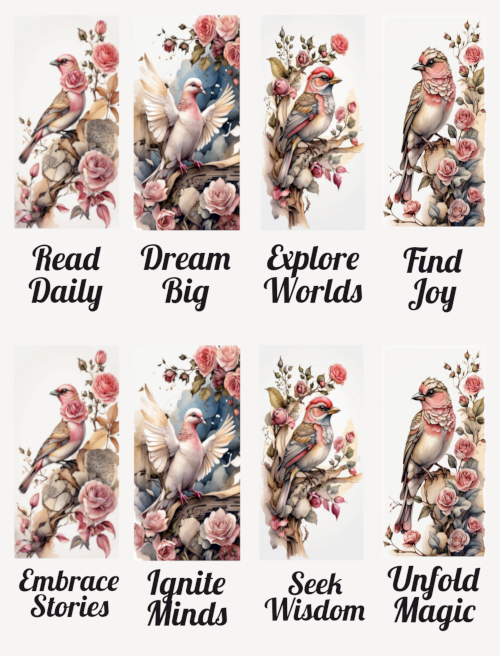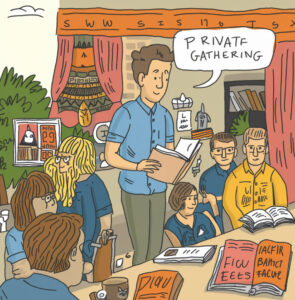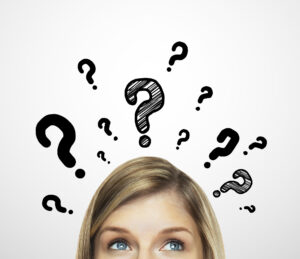
Download 8 pretty, pink bird bookmarks with two-word positive thoughts. Great giveaway. Sweet Gift. Perfect Forget-me-not.
Author Marketing Website
 The one main reason I have right now is that I want to avoid offering this to the general public because I am not sure if the book, even though it is edited, is in its final form.
The one main reason I have right now is that I want to avoid offering this to the general public because I am not sure if the book, even though it is edited, is in its final form.
I normally will offer the ARC copy knowing that people want free copies, but this book I’m unsure about. I want to at least start with my newsletter readers who I can ask to help me with feedback and fill out a questionnaire about the book.
I’m not sure I will go with this exact ending. So this is not set for pre-order and although it has been edited, I may change the book based on feedback and then it will need to be re-edited. So I don’t want a lot of copies of this book floating around.
By limiting the number, I can make sure I send a free copy to the ones who read it for me and I can tell them where and why I changed the text.
 In order to offer a limited ARC copy, I will use my newsletter list, which is really my reader list, and my website. I will limit the invitations to these two places.
In order to offer a limited ARC copy, I will use my newsletter list, which is really my reader list, and my website. I will limit the invitations to these two places.
Here is a list of the steps I will need to go through. I will be making short videos and/or blog posts to share what I did in each of these phases. Nothing is hard, but it all takes time.
 I usually bring these epubs into Sigil, a program to create and/or edit ePubs in order to make some global changes and/or clean up the extra codes it may bring inside. I will have a video on this one.Create a PDF from your docx file. Once you have the epub and PDF, you are ready to upload to KDP and test it. I will cover this in one of the videos.Upload the PDF and the ePub up to google drive and copy the links; you will need them later.
I usually bring these epubs into Sigil, a program to create and/or edit ePubs in order to make some global changes and/or clean up the extra codes it may bring inside. I will have a video on this one.Create a PDF from your docx file. Once you have the epub and PDF, you are ready to upload to KDP and test it. I will cover this in one of the videos.Upload the PDF and the ePub up to google drive and copy the links; you will need them later. The next steps are done with my website. They have to do with pages and forms. So if you don’t have a website, then you can use google forms or whatever system you presently use to get signups. I use Mailerlite and could have set this up through them, but I want to receive the emails and names myself so I can keep a list of who the ARC readers are so I can ask them for a review when the book is ultimately published.
The next steps are done with my website. They have to do with pages and forms. So if you don’t have a website, then you can use google forms or whatever system you presently use to get signups. I use Mailerlite and could have set this up through them, but I want to receive the emails and names myself so I can keep a list of who the ARC readers are so I can ask them for a review when the book is ultimately published.I need a page with graphics introducing the book.
I need a graphic and link for the front page of my website.
I need a Contact Form 7 with an auto-reponder where I put the two links from Google Drive to download either the PDF or the ePub. I need to check the form to make sure it works.
I need to create a form for my feedback questions and post it on a separate page on the website.
Then I need to create a list to keep track of who my ARC readers are and their emails.
So that is the process I am now going through. In the next blog posts and videos, I will be addressing these very creations and/or changes.

In my quest to improve my marketing in 2005, I decided I needed a couple of short stories to offer as giveaways. Although I’ve written 14 novels, I’ve never written a short story.
I went on a quest and read several classic short stories and below are my findings. I’m not an authority on this, of course, but I’m just offering my observations and what I learned to far.
 The first thing I noticed is that the story needs to be contained or confined to a shorter version than a novel. This means that you won’t have the same space to build the characters.
The first thing I noticed is that the story needs to be contained or confined to a shorter version than a novel. This means that you won’t have the same space to build the characters.
The other thing I noticed is that the storyline is about one event or one meeting of some kind. For example: A weekend visit, or a train ride, or a meeting on the street that leads to something happening.
Keeping this need for containment in mind I believe will prevent us, as writers, from setting out to write a short story and somehow writing a novelette or even a novel.
The next thing I noticed was that the sentences in many of the short stories were longer than in novels, as they contained so much added information. In other words, you need to pack the background and characterization inside the action of the story. Every word counts and the writers wrote succinctly and every word served the story.
Knowing the need for this, I believe it will help with story containment.
 There are templates all over the internet for story crafting, but they all seem to follow the hero’s journey, which I find doesn’t work for mystery books. At least I was never able to make them work for me.
There are templates all over the internet for story crafting, but they all seem to follow the hero’s journey, which I find doesn’t work for mystery books. At least I was never able to make them work for me.
So I have created a template for a Short Story Mystery Template that asks all the who, what, where, when questions that you will need to set up the bones of the short story.
If you’re interested in downloading the form, click below to access the form.